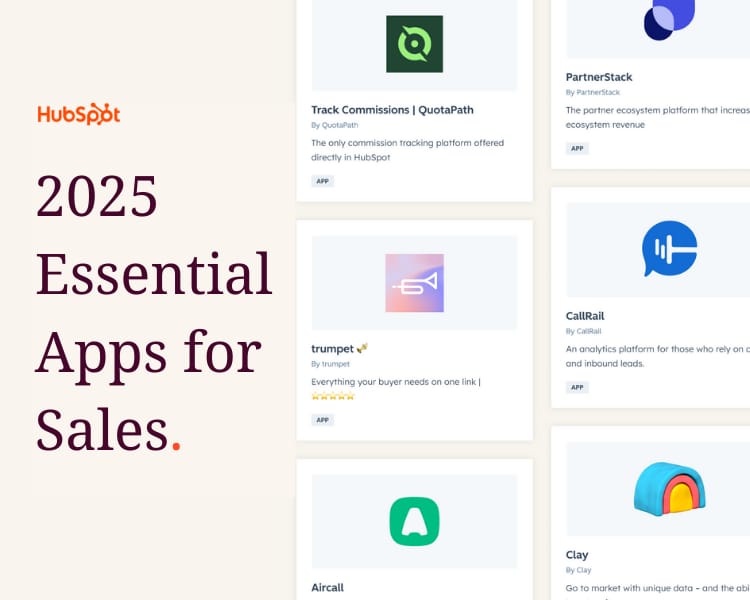Good Morning. Today is International Day of Peaceful Communication. A good reminder that your follow ups should sound helpful, not hostile. “Thought you might find this interesting” hits different than “Just circling back… AGAIN". Peace be with you on this day of outreach. Now, let’s get into today’s Follow Up. (:
Always keep momentum 🗣
How to find the right titles 🔍
Exposing a sales cult 👀
Sales jobs & a meme 😂
Sales Tip of The Day 💡
When a buyer says, ‘This has been really helpful,’ turn it into momentum.
❌ “Glad to hear that! I’ll send you the follow-up materials.”
✅ “Awesome to hear. From here, what’s the logical next step on your side to keep the ball rolling?”
This converts the conversation into a clear next action and keeps you from mistaking politeness for progress.
Always set the next steps!
Less admin. More selling. Your new essential toolkit.
There’s no magic wand in sales, but the right tools come close.
The Essential Apps for Sales collection features 14 easy to use apps that, paired with HubSpot, make selling easier, decisions smarter, and wins more repeatable.
Explore the list in the HubSpot Marketplace.

Who’s Actually in Charge Here: Finding the Right Title in B2B Sales
The only thing more inflated than the housing market right now is job titles.
Go look at a bank on LinkedIn…
Everyone’s a VP who reports to a VP, who manages other VPs.
It’s like Oprah was handing out promotions…

Which makes one of the trickiest parts of selling even harder: figuring out who to talk to.
Today, we’re breaking down the playbook on how to navigate all of the corporate titles out there and find the right person to sell talk to.
The Title Trap
One of the easiest ways to waste a bunch of time is by chasing “the highest title” instead of the right person.
In B2B, buying power is scattered across teams. Finance wants ROI, IT wants security, operations wants simplicity. Nobody makes the call alone anymore.
And then comes the literal titles…
“Head of Growth” might actually run marketing.
“Partnerships Manager” might really be in sales.
“Revenue Operations Lead” could mean anything from Salesforce admin to full-blown strategist.
Titles get tricky, so you can’t take them at face value.
The Better Way: Roles, Not Titles
Instead of searching for a job title or seniority, start with function.
Who feels the pain you solve?
Who controls the budget?
Who will be measured on the outcome?
Example: Say you sell expense automation software.
The CFO approves it (duh). But it’s likely the Controller or Head of Accounting who owns the process, and the Accounting Manager who suffers through the current mess.
Start there. Build outward.
The Tools That Actually Help
1. LinkedIn Filters (used correctly)
Use “Department” and “Seniority Level” filters instead of just typing “CFO.” Combine keywords like finance operations or reporting automation to surface people with relevant responsibilities.
Bonus: tighten up your targeting with Boolean searches on LinkedIn. Mix operators like AND, OR, and quotes to find the right mix of titles (e.g., "Head of Growth" OR "Marketing Director" AND SaaS).
2. Org Mapping
If you’ve already got one contact inside, use them as your compass.
The people inside know who actually runs things. Ask questions like:
“Who owns {problem area} day to day?” Or “What does ‘Head of Strategy’ actually handle on your team?”
You’ll learn more from a five-minute chat than any org-chart software.
3. Company Sites, Open Roles & Press Releases
Leadership and hiring pages often reveal who owns key initiatives. When a company posts a new “Director of RevOps” role, there’s a ton of intel to gather. Look for insights like the role responsibilities, who they’ll report to & manage, and the tools they’ll use.
4. Cold-Call the Front Desk
It’s old school but effective.
Ask: “Who handles [X process] or [Y responsibility]?”
Gatekeepers will often point you straight to the person you’re looking for. You’d be surprised how simple this is.
5. Ask in the Email
If you’re unsure, acknowledge it.
“If this isn’t your lane, could you point me to who owns [specific function]?”
It’s polite, efficient, and could get you an extremely valuable referral.
Reading Between the Lines
Once you’re in conversation, listen for signals that you’re too low or too high.
If someone says, “I’ll need to run this by my team,” you’ve probably found an influencer, not the buyer.
If someone says, “This looks interesting, but I don’t handle that process,” you’ve got the wrong title.
Neither is bad, you just need to pivot:
“Got it. Who’d be closest to dealing with this day-to-day?”
Great sellers treat these moments as breadcrumbs instead of dead ends.
The Quick Checklist
Start with pain, not title.
Target the function, then confirm the titles.
Use LinkedIn filters by department and seniority, not just keywords.
Use your contacts for intel.
Don’t be afraid to call or ask directly.
What do you think is the best way to find the right title?



